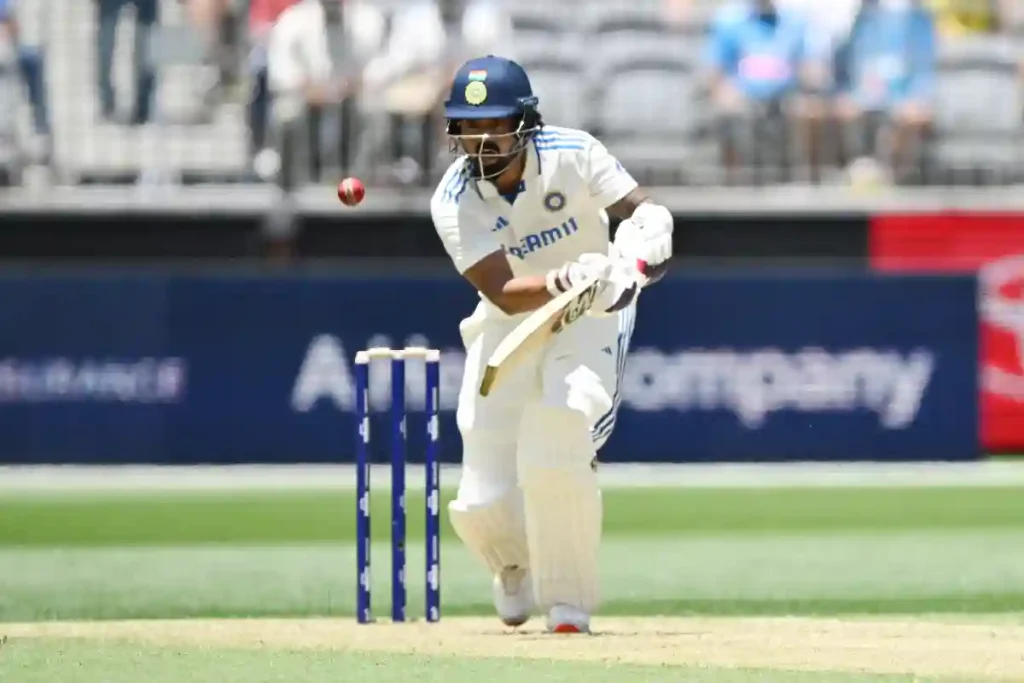November 22, 2024: The first day of the 2024 Border-Gavaskar Trophy (BGT) in Perth saw a significant and controversial moment when India’s opening batsman, KL Rahul, was dismissed in a decision that ignited debate over the use of technology in cricket. Rahul, who had looked solid and composed during his 74-ball knock of 26, was dismissed in a controversial fashion after a review, leaving India at a vulnerable 47/4 in their first innings.
The dismissal occurred before lunch, with Mitchell Starc and the Australian fielders appealing for a catch behind as the ball passed Rahul’s bat. Initially, on-field umpire Richard Kettleborough deemed the appeal not out, despite the strong appeal from the Australians. However, Australia decided to review the decision, and the third umpire, Richard Illingworth, was called upon to examine the evidence.
The review showed a single spike on the Snicko system as the ball passed Rahul’s bat. However, Rahul, who had been adamant that the ball had hit his pad rather than his bat, remained unconvinced. The visual evidence from the replays seemed to suggest that the ball might have struck the pad first, but the spike on the Snicko system led the third umpire to overturn the on-field decision, ruling Rahul out.

The decision quickly became a point of contention, with former cricketer Sanjay Manjrekar expressing his frustration with the process and the reliance on technological evidence. On commentary, Manjrekar argued that the available visual evidence did not provide the clarity needed to make such an important decision.
In his analysis, Manjrekar noted:
“First of all, disappointed with what was provided to the TV umpire. He should have had more evidence. Based on just a couple of angles, I don’t think such an important decision in the match should have been made.”
He further emphasized that the naked eye showed only one certainty: the bat hitting the pad. According to Manjrekar, this was the only clear visual evidence available to the umpires, and any decision based on technological aids like Snicko should have been more decisive.
“For everything else, you needed the aid of technology, which is Snicko,” Manjrekar explained. “So ideally, if there was bat contact, there should have been an earlier spike because clearly two events occurred: first the bat, and then the pad. But we weren’t shown two spikes. It was just one.”
Manjrekar’s criticism centered on the insufficient clarity provided by the technology. He argued that without a clear second spike to indicate an edge, the umpire should have stuck with the on-field decision, which was not out. He described the situation as a “travesty,” especially in the context of India’s difficult position in the match.
“If there weren’t two spikes, they should have gone with the visual evidence which was bat hitting the pad. It was poor all around, and I don’t blame the on-field umpire,” Manjrekar said. “You’ve got to feel for KL Rahul, the amount of hard work he had put in opening the innings. Such a big moment personally for him, and for India too.”
For Rahul, the dismissal came at a critical time in his career. After battling through a difficult period, the 26 runs seemed to have provided him with the confidence and form he needed. But the controversial nature of the dismissal left him and many others in disbelief. The decision, while officially correct based on the available evidence, highlighted the challenges of making conclusive judgments with limited data.



